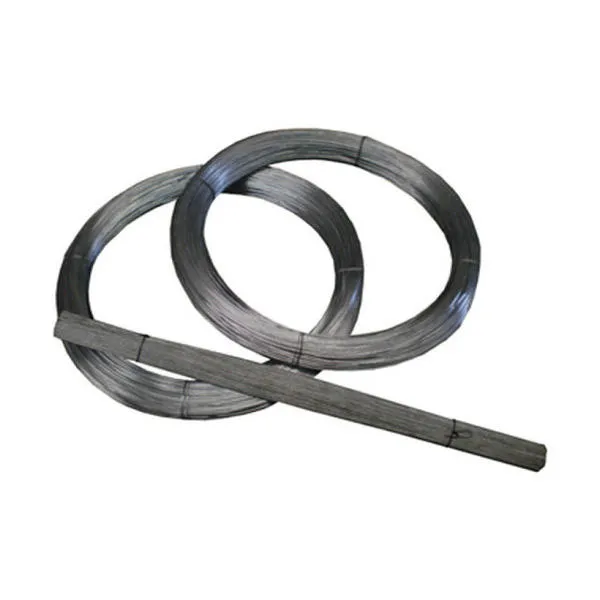Ene . 03, 2025 09:28 Balik sa listahan
Understanding Black Annealed Wire and Its Specifications
What is Black Annealed Wire Specification?
The black annealed wire specification refers to a set of key characteristics that define the wire's composition, strength, and flexibility. This type of wire is produced through a process called annealing, which involves heating the wire to high temperatures and then cooling it in a controlled manner. This results in increased flexibility, making it easier to bend and shape. The black annealed wire specification also includes important factors like its tensile strength, diameter, and coating, ensuring it meets the specific needs of different industries.
This wire is widely used in applications such as mesh construction, fencing, and crafting, where both strength and flexibility are needed. It is valued for its durability and cost-effectiveness, making it a versatile option for various projects.

Benefits of Using 16 Gauge Black Annealed Wire
The 16 gauge itom nga annealed wire is a popular choice due to its ideal balance of strength and flexibility. It is commonly used for wire tying, mesh construction, and other light industrial applications. The 16 gauge itom nga annealed wire is strong enough to handle moderate loads while being flexible enough to bend easily, making it an excellent choice for both residential and commercial projects.
This gauge of wire is also often used in agricultural settings for tying plants and constructing support structures. Its ability to resist corrosion and withstand outdoor conditions further adds to its appeal in a variety of industries.
Applications of 1.6mm Black Annealed Wire
The 1.6mm itom nga annealed wire is a versatile wire used in several industries, including construction, agriculture, and manufacturing. Its thin profile, coupled with its strong tensile strength, makes it suitable for applications such as wire mesh, fencing, and tying. The 1.6mm itom nga annealed wire is also used in crafting projects, as its flexibility allows for precise, detailed work.
In addition, this wire is ideal for reinforcing mesh structures in the construction industry, particularly in the creation of concrete slabs, where precision and strength are required. It is also commonly used in the manufacturing of wire baskets and other industrial items.
Why Choose Black Annealed Wire?
The black annealed wire is favored by many industries for its outstanding combination of flexibility, strength, and affordability. Due to its process of annealing, it is highly resistant to rust and corrosion, making it a durable option for outdoor applications. Its ability to maintain its form under stress while being easily bent makes it ideal for a wide range of applications, from construction to agriculture.
Another key benefit is the cost-effectiveness of black annealed wire, offering high-quality results without breaking the budget. Whether you're using it for wire mesh, supporting structures, or general wire tying, black annealed wire delivers reliability at a competitive price.
Why the 1.6mm Black Annealed Wire Is Popular for Industrial Use
The 1.6mm itom nga annealed wire has gained popularity in industrial applications because of its ability to combine flexibility with sufficient strength for demanding tasks. It is commonly used for manufacturing wire baskets, reinforcement mesh, and light-duty fences. The 1.6mm itom nga annealed wire also works well in applications requiring precise measurements and intricate designs due to its malleability.
The strength of 1.6mm itom nga annealed wire also makes it suitable for use in agriculture and construction, where structural stability is important but without the need for thicker, more rigid wire. Its durability, ease of use, and low cost make it an attractive choice for industrial and DIY applications alike.
From the detailed black annealed wire specification to the practical uses of 16 gauge itom nga annealed wire and the highly adaptable 1.6mm itom nga annealed wire, this versatile material continues to be a staple in industries like construction, agriculture, and manufacturing. Whether you're using it for fencing, mesh construction, or crafting, black annealed wire remains an essential tool for both professionals and DIY enthusiasts. Its combination of strength, flexibility, and cost-effectiveness ensures its continued popularity in a variety of applications.
-
How PVC Welded Wire Mesh Enhances Industrial Safety Standards
BalitaJul.23,2025
-
Hexagonal Wire Mesh Innovations for Coastal Protection Projects
BalitaJul.23,2025
-
Galvanized Wire Fence Maintenance Tips for Harsh Weather Conditions
BalitaJul.23,2025
-
Galvanized Steel Grating Applications in Industrial Flooring Solutions
BalitaJul.23,2025
-
Energy Absorption Capabilities of Twisted Square Bars in Seismic-Resistant Structures
BalitaJul.23,2025
-
Affordable Chain Link Fence Gate Options for Residential Security
BalitaJul.23,2025

